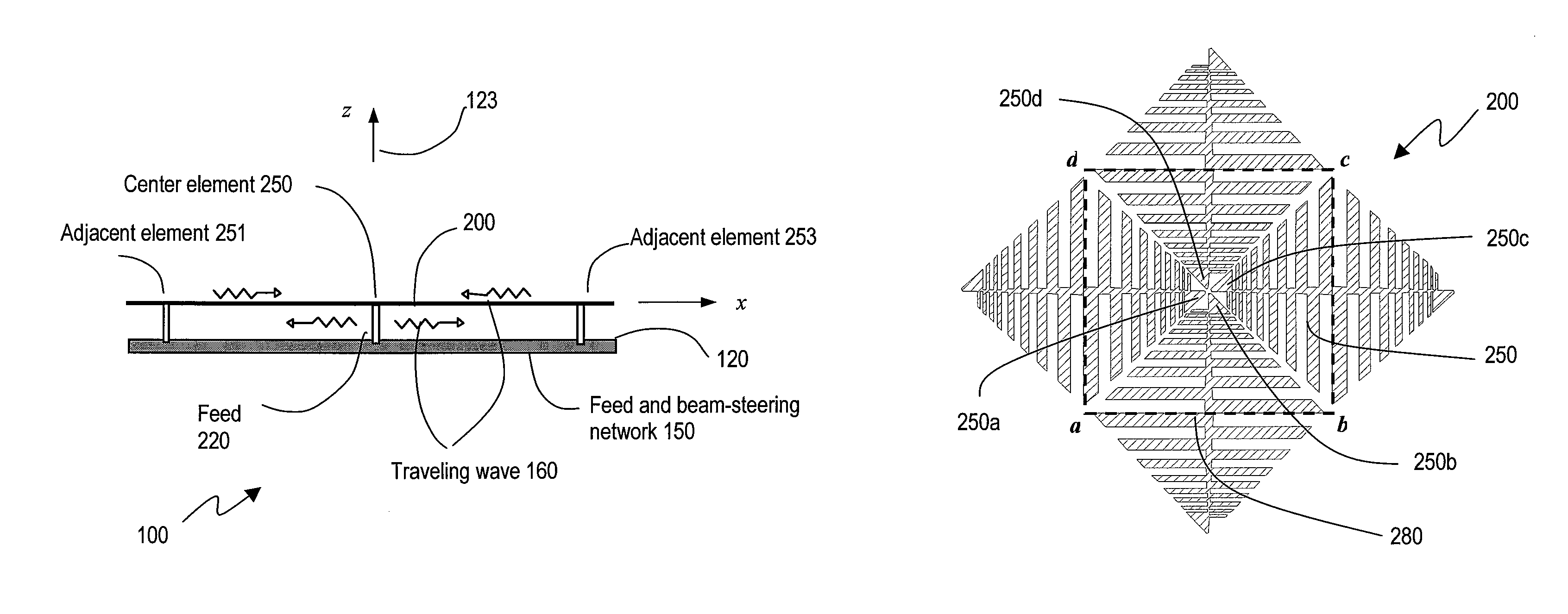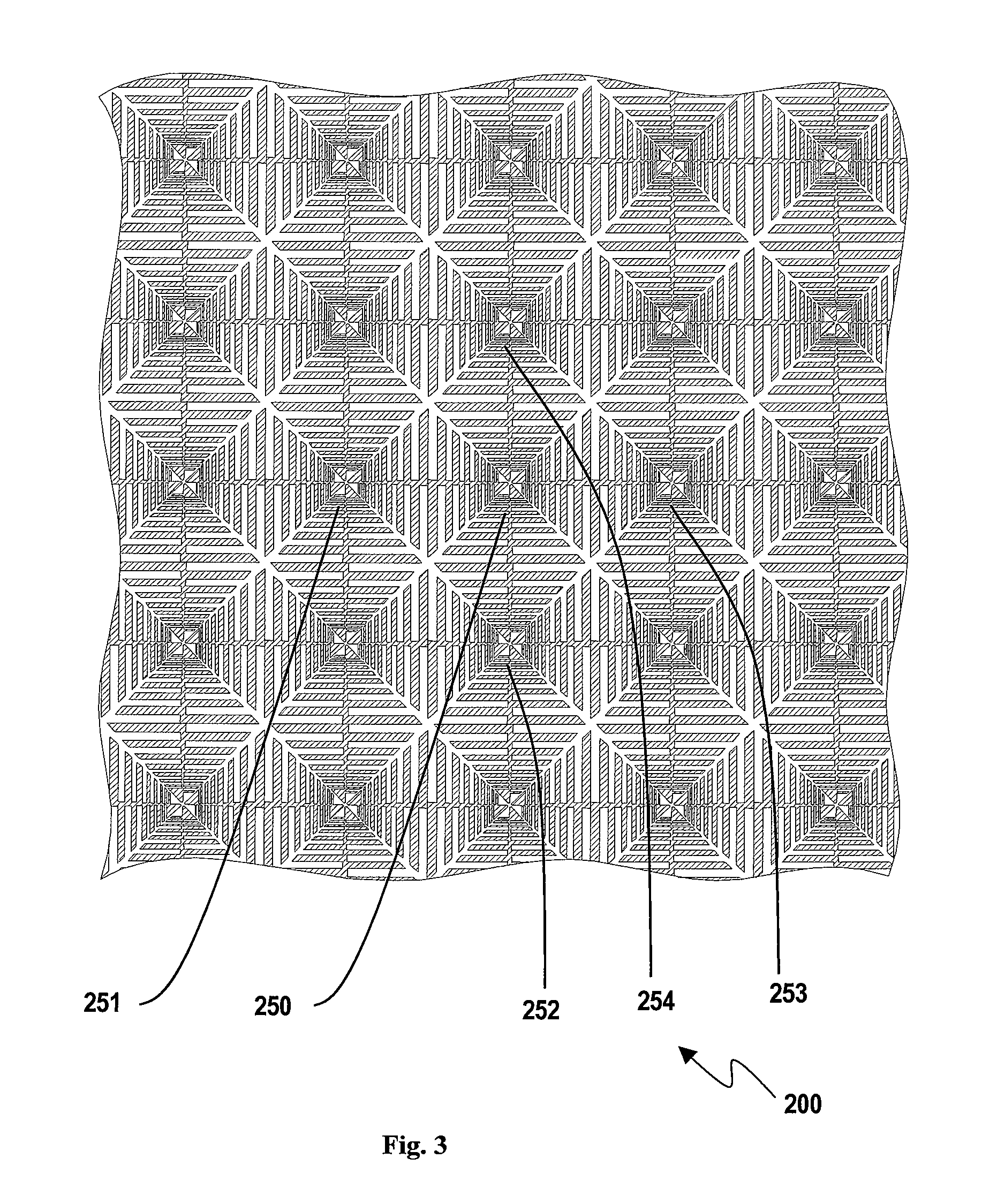Planar broadband traveling-wave beam-scan array antennas
- Summary
- Abstract
- Description
- Claims
- Application Information
AI Technical Summary
Benefits of technology
Problems solved by technology
Method used
Image
Examples
experimental verification
[0052]Basic experimentation has been performed for this invention. A breadboard 5×5-cell planar array similar to that in FIGS. 3-5 was designed, fabricated, and tested. Each cell has both x and y directed LP planar dipoles. The vertical center element has a broadband balun feed across its feed terminals (corresponding to 250b and 250d in FIG. 5). Each of the other 24 vertical LP dipoles has a 100-ohm resistor load. All the 25 horizontal LP dipoles have their feed terminals (corresponding to 250a and 250c in FIG. 5) floating (open-circuit with no connection to other element or device).
[0053]According to the theory and practices in planar arrays, the properties of a large planar array can be determined by measuring its “active element gain pattern,” which takes account of the mutual coupling and beam scan of a planar array (Mailloux, 1994; Pozar, 1994). The active gain pattern reveals the scan property of the element antenna, including both impedance matching and radiation pattern. Th...
PUM
 Login to View More
Login to View More Abstract
Description
Claims
Application Information
 Login to View More
Login to View More - R&D
- Intellectual Property
- Life Sciences
- Materials
- Tech Scout
- Unparalleled Data Quality
- Higher Quality Content
- 60% Fewer Hallucinations
Browse by: Latest US Patents, China's latest patents, Technical Efficacy Thesaurus, Application Domain, Technology Topic, Popular Technical Reports.
© 2025 PatSnap. All rights reserved.Legal|Privacy policy|Modern Slavery Act Transparency Statement|Sitemap|About US| Contact US: help@patsnap.com



